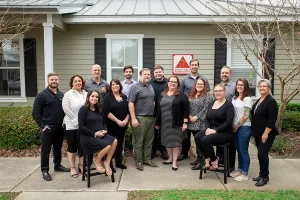Tech tips to maximize insurance recovery during hurricane season

According to scientists at the National Oceanic and Atmospheric Administration, 2022 will be the seventh consecutive above-average hurricane season for the Atlantic region. Experts forecast 5 to 10 hurricanes with winds at least 75 mph, and 10-15 more weather events with winds exceeding 40 mph. We could see winds exceeding 100 mph during several hurricanes this season. Storms like these bring severe damage from wind, rain, debris, and electrical issues up and down the Atlantic coast that wreak havoc on business operations. Some may even prompt government orders calling for mandatory evacuation and business suspensions.
While the frequency of these storms may increase, insurance headaches for policyholders need not. The world has changed in terms of technology and data, even in the past few years. Recent advances can help policyholders be prepared for potential claims, reduce aggravations, and maximize recovery of insurance proceeds in the event of a loss.
Be prepared
Several different types of insurance policies may provide coverage for storm-related losses, and the most common are first-party policies, such as Commercial Property, Marine Property, Marine Open Cargo, and Event Cancellation. These policies protect a wide array of interests including a policyholder’s place of operations, inventory, goods in transit, equipment and machinery, business-related structures and systems, and business income.
Many first-party insurance policies are sold on an ‘all risk’ basis, meaning that they cover losses to insured property caused by any peril not expressly excluded. A policyholder insured by an all-risk policy needs to show only that they sustained a fortuitous loss to property in which they have an insurable interest. The insurer must then come forward to prove that an excluded peril is the cause of loss. A ‘named perils’ policy, on the other hand, covers only those perils expressly listed.
Both types of policies may contain coverage exclusions, such as language barring coverage for loss caused by mold. The policies may also contain other restrictions, such as time limitations requiring the policyholder to notify the insurer of a loss ‘as soon as possible’ or within weeks. The consequences of failure to give prompt notice differ depending on the type of policy and jurisdiction, but insurers may argue that untimely notice is a gating issue to coverage. Policyholders should alert their insurers in the event of a loss.
Today, technology helps policyholders’ preparedness and the ability to react while remote.
Policyholders can create cloud-based storage folders in which to save insurance policies and organize them, for example, by year or coverage type. Having well-organized insurance policies available at your fingertips from any remote location will reduce the risk that a policyholder overlooks potentially applicable coverage in the event of a loss. After a loss, well-organized policies will be easier to locate and review for coverage, and to quickly identify potential limitations or other pitfalls. Policyholders may also want to keep a checklist of key policy requirements and relevant contacts in the event of a loss.
Reduce risk
With advances in technology, policyholders can be more prepared than ever in advance of a storm. Weather services provide alerts and increasingly accurate predictions as storms approach. Social media and open-source reporting allow for quicker and more localized information about how a storm is impacting the policyholder’s community, customers and suppliers. Email listservs, text chains and group messaging enable immediate communication with the policyholder’s team, customers, and vendors. Each of these advances can help policyholders reduce the risk to their team and business.
Policyholders can also take steps to plan for potential insurance claims. Policyholders should consider investing in offsite or cloud-based storage to back up data in the event of large-scale damage or electrical issues. Scanning and saving electronic versions of important documents can ensure easy access to quickly react to a potential loss.
Also, taking photos of insured property on a regular basis can help policyholders prove the value (or existence) of items damaged or lost in a storm.
Maximize recovery
Pursuing insurance claims following weather events can be complex and challenging, especially when storm damage creates problems at work and home for policyholders’ management and employees. Even sophisticated businesses unknowingly commit errors in assessing, documenting, and quantifying their losses—or when interpreting their insurance policies—that an insurer may later attempt to use as means to limit or even bar potential insurance recovery.
While insurance may not be top of mind for a policyholder after a storm, having the ability to deftly navigate complex matters while being away from the office and, potentially, your home, can help prevent or reduce mistakes in the aftermath of a storm.
Once again, technology can help policyholders compile support for the loss claimed, and expense incurred. Policyholders can quickly and easily document physical damage by taking photos or video with their smartphone. Policyholders can photograph receipts to capture expenses incurred in real-time; many applications even allow for sending, storing, and organizing smartphone photographs as PDF files. In the event of business interruption, electronic financial data can assist with quickly compiling loss information, providing historical revenue and expense data to the relevant consultant, and accessing the information necessary to project expected earnings. Similarly, easily accessible transaction records with key customers and suppliers may be critical in the event of a claim for contingent business interruption coverage.
Unfortunately, once-in-a-century hurricanes are becoming near-annual occurrences. But taking advantage of available technologies like organized electronic records and a readily available smartphone camera can reduce the impact of these storms on a business and help policyholders to maximize the recovery of their insurance proceeds.


